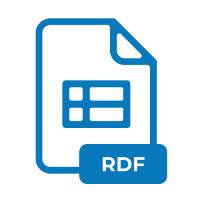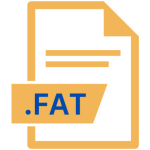.RDF File Extension

Resource Description Framework File
| Developer | N/A |
| Popularity | |
| Category | Settings Files |
| Format | .RDF |
| Cross Platform | Update Soon |
What is an RDF file?
RDF (Resource Description Framework) files are a type of structured data format used to represent information about resources on the web in a machine-readable way. They serve as a means of describing resources, their properties, and the relationships between them using a standardized syntax.
More Information.
RDF was initially conceived as a method for representing metadata about web resources, allowing for more precise search and retrieval capabilities. Its purpose has since evolved to encompass a wide range of applications, including data integration, knowledge representation, and the development of intelligent systems.
Origin Of This File.
The RDF format was developed by the World Wide Web Consortium (W3C) as a foundational technology for the Semantic Web initiative. It emerged in the late 1990s as a response to the need for a common framework to describe and exchange data on the web in a way that is understandable not only to humans but also to machines.
File Structure Technical Specification.
RDF files consist of statements in the form of subject-predicate-object triples, where the subject represents the resource being described, the predicate represents the property or relationship, and the object represents the value of the property or the related resource. These triples are typically encoded using XML or more recently, in a more concise form, using formats such as Turtle or JSON-LD.
How to Convert the File?
Windows:
- Utilize software like Apache Jena or RDFLib, which offer APIs for parsing and converting RDF files into various formats.
- Alternatively, you can write custom scripts using programming languages like Python or Java to convert RDF files. Libraries like rdflib in Python provide functionalities to read and manipulate RDF data.
- Some RDF editors may also provide built-in conversion capabilities, allowing you to export RDF data into other formats like JSON-LD or Turtle.
Linux:
- Use command-line tools like Apache Jena or RDFLib, which are compatible with Linux distributions. These tools can be installed via package managers like apt or by manually downloading and installing them.
- Write scripts in Python or other programming languages using RDF libraries available for Linux systems. Tools like rdflib can be used to parse RDF data and convert it into desired formats.
- Explore Linux-friendly RDF editors that offer conversion features. These editors may provide options to export RDF files into formats like JSON-LD, N-Triples, or RDF/XML.
Mac:
- Similar to Windows and Linux, you can employ software such as Apache Jena or RDFLib, which are compatible with macOS. Install them using package managers like Homebrew or manually from their official websites.
- Develop scripts in Python or other supported languages using RDF libraries like rdflib to convert RDF files. These scripts can parse RDF data and convert it into formats such as JSON-LD or RDF/XML.
- Look for RDF editors available for macOS that offer conversion functionalities. These editors may allow you to export RDF files into various formats suitable for your needs.
Android:
- Install a text editor app from the Google Play Store that supports RDF file editing. Apps like Turbo Editor or DroidEdit can handle RDF files.
- Use online conversion tools accessible through mobile web browsers. Websites like RDF Translator offer online conversion services where you can upload RDF files and convert them to other formats.
- Develop custom Android applications using programming languages like Java or Kotlin with RDF parsing and conversion functionalities. You can integrate RDF libraries like Apache Jena or RDFLib into your app to facilitate the conversion process.
iOS:
- Install a text editing app from the App Store that supports RDF file editing, such as Textastic or Koder.
- Explore online conversion services accessible through mobile web browsers. Websites like RDF Translator offer conversion tools that can be accessed on iOS devices.
- Develop iOS applications using Swift or Objective-C with RDF parsing and conversion capabilities. Integrate RDF libraries like Apache Jena or RDFLib into your app to enable RDF file conversion functionalities.
Advantages And Disadvantages.
Advantages of RDF files include their flexibility, interoperability, and ability to represent complex relationships between resources. They facilitate data integration across disparate sources and support the development of semantic applications. However, RDF files can be complex to author and understand, and their processing overhead can be higher compared to simpler data formats.
How to Open RDF?
Open In Windows
RDF files can be opened using text editors like Notepad or specialized RDF editors such as Protege.
Open In Linux
Similar to Windows, RDF files can be opened using text editors like Vim or Emacs, or with RDF-specific tools available in Linux repositories.
Open In MAC
RDF files can be opened using text editors like TextEdit or with specialized RDF editing software available for macOS.
Open In Android
RDF files can be opened on Android devices using text editor apps available on the Google Play Store or with applications that support RDF file formats.
Open In IOS
iOS devices can open RDF files using text editing apps from the App Store or with specialized RDF-compatible applications.
Open in Others
Other platforms may have their own text editors or specialized tools for opening and editing RDF files. In case no specific tool is available, any text editor capable of handling the RDF syntax can be used.












